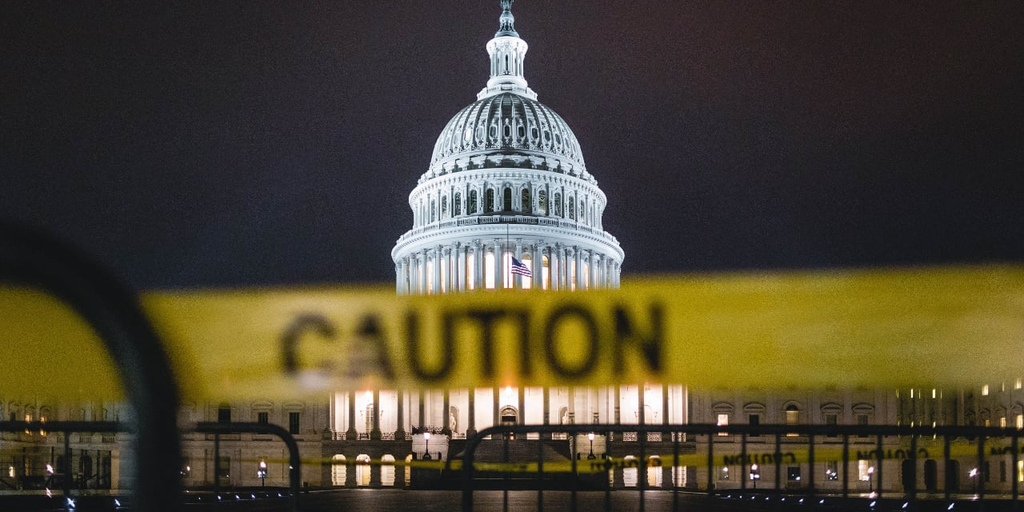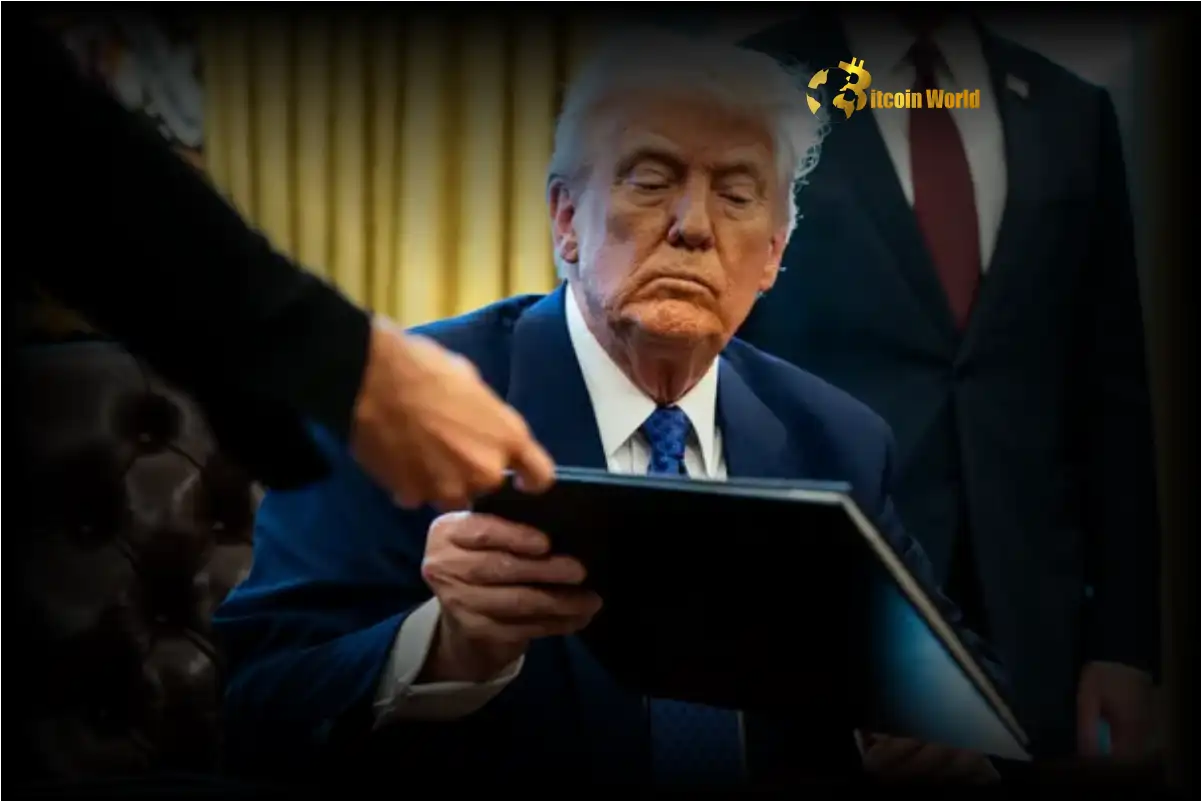In a bold declaration that has sent ripples through global markets and international relations, U.S. Commerce Secretary Howard Lutnick has stated unequivocally that eliminating the tariffs imposed during President Donald Trump’s administration is simply “impossible.” This assertion arrives as businesses worldwide grapple with the lingering effects of these trade measures and eagerly anticipate potential shifts in U.S. trade policy under new leadership. But what exactly does this mean for the future of global commerce, and how will it impact the cryptocurrency market, which is increasingly intertwined with macroeconomic trends?
Understanding the Unbreakable Tariffs and US Trade Policy
Secretary Lutnick’s statement isn’t just a casual remark; it’s a firm indication of the current stance of the U.S. government regarding trade policy. He clarified that while negotiations are possible, they are contingent upon other nations addressing both tariff and non-tariff barriers. This suggests a strategic posture of maintaining leverage in international trade discussions. To truly grasp the significance, let’s break down the key elements:
- Tariffs as Leverage: The U.S. is using existing tariffs as a bargaining chip. This implies that these tariffs are not merely punitive measures but tools to encourage reciprocal trade practices from other countries.
- Beyond Tariffs: The focus extends beyond just tariffs to include ‘non-tariff barriers.’ These can encompass a wide range of regulations, standards, and bureaucratic hurdles that can impede international trade. Addressing these is as crucial, if not more, than tariff reduction.
- Conditional Negotiation: Negotiations are not off the table, but they are conditional. Other countries must demonstrate a willingness to resolve trade imbalances and barriers to even begin discussions on tariff elimination.
This approach signals a continuation of a tough stance on global trade, moving away from the pre-Trump era norms of free trade and multilateral agreements. It reflects a more assertive, bilateral approach where the U.S. seeks to secure what it perceives as fairer trade deals.
The Global Trade Chessboard: Challenges and Implications
The assertion that Trump’s tariffs are “impossible to eliminate” presents a complex web of challenges and implications for the global economic landscape. Here are some key points to consider:
- Strained International Relations: Maintaining these tariffs could perpetuate trade tensions with key partners like China, the European Union, and others. This could lead to retaliatory measures and further disrupt global trade flows.
- Supply Chain Disruptions: Tariffs have already contributed to significant supply chain disruptions. Continuing them could mean prolonged uncertainty for businesses that rely on international sourcing and manufacturing. This is particularly relevant in sectors like technology and manufacturing, which are vital for cryptocurrency infrastructure.
- Inflationary Pressures: Tariffs often translate to higher costs for imported goods, which can contribute to inflation. This inflationary pressure can impact consumer spending and investment, indirectly affecting the cryptocurrency market’s risk appetite.
- Uncertainty for Businesses: The lack of clarity on future trade policy creates uncertainty for businesses. Companies need predictability to make long-term investment decisions, and prolonged tariff regimes can stifle investment and growth.
Let’s consider a table to visualize the potential impacts:
| Impact Area | Potential Consequence | Relevance to Crypto |
|---|---|---|
| International Relations | Increased trade disputes, retaliatory tariffs | Market volatility, investor sentiment |
| Supply Chains | Higher costs, production delays | Impact on mining equipment, technology sector |
| Inflation | Increased prices, reduced purchasing power | Potential shift to crypto as inflation hedge, but also reduced disposable income for crypto investment |
| Business Uncertainty | Reduced investment, slower economic growth | Cautious institutional investment in crypto, market stagnation |
Impact on the US Economy: A Double-Edged Sword?
While the stated aim of tariffs was to bolster the US economy and protect domestic industries, the reality is far more nuanced. Economists have presented varied perspectives on the actual economic impact. Here’s a balanced view:
Potential Benefits (as intended by proponents):
- Protection of Domestic Industries: Tariffs can shield domestic industries from foreign competition, allowing them to grow and create jobs within the U.S.
- Bargaining Power: As Secretary Lutnick mentioned, tariffs provide leverage in trade negotiations, potentially leading to more favorable trade agreements in the long run.
- Reduced Trade Deficits: In theory, tariffs can reduce trade deficits by making imports more expensive and encouraging domestic consumption and production.
Challenges and Negative Impacts:
- Increased Costs for Consumers and Businesses: Tariffs are ultimately paid by consumers and businesses in the form of higher prices. This reduces purchasing power and increases operational costs.
- Retaliation and Trade Wars: As seen in recent years, tariffs often provoke retaliatory tariffs from other countries, leading to trade wars that harm all involved economies.
- Damage to Export Sectors: Retaliatory tariffs can specifically target key U.S. export sectors, harming American businesses and farmers.
- Distorted Markets and Inefficiency: Tariffs can distort market signals, leading to inefficient resource allocation and reduced overall economic productivity.
Actionable Insights: Navigating the Tariff Terrain in the Crypto World
For those involved in the cryptocurrency space, understanding the implications of these tariffs is crucial. Here are some actionable insights:
- Monitor Geopolitical Developments: Stay informed about ongoing trade negotiations and geopolitical tensions. These events can trigger market volatility and impact cryptocurrency prices.
- Diversify Supply Chains: Businesses in the crypto mining and hardware sectors should consider diversifying their supply chains to reduce reliance on regions heavily affected by tariffs.
- Hedge Against Inflation: As tariffs can contribute to inflation, consider strategies to hedge against inflationary pressures, which might include holding certain cryptocurrencies perceived as inflation hedges.
- Advocate for Policy Changes: Engage with industry associations and policymakers to advocate for trade policies that support innovation and growth in the cryptocurrency and blockchain sectors.
- Prepare for Volatility: Be prepared for increased market volatility due to trade policy uncertainties. Implement robust risk management strategies in your crypto investments and businesses.
The Future of Global Trade and Your Crypto Portfolio
Secretary Lutnick’s statement paints a picture of a potentially prolonged era of tariffs and assertive international relations in trade. While the full ramifications are still unfolding, it’s clear that these policies will continue to shape the global economic landscape, influencing everything from traditional markets to the burgeoning cryptocurrency ecosystem. For crypto investors and businesses, staying informed, adaptable, and strategic is paramount in navigating this evolving terrain. The “unbreakable” nature of these tariffs, as declared, serves as a stark reminder of the enduring impact of political decisions on the intricate world of global finance and digital assets.
To learn more about the latest crypto market trends, explore our article on key developments shaping Bitcoin price action.
News – BitcoinWorld – Read More










